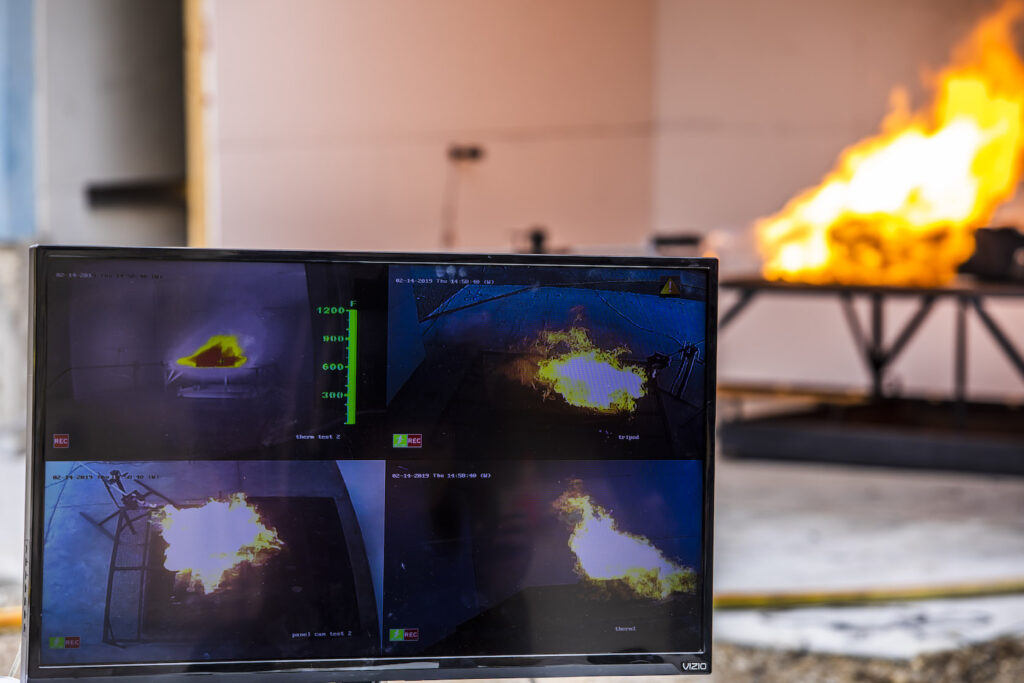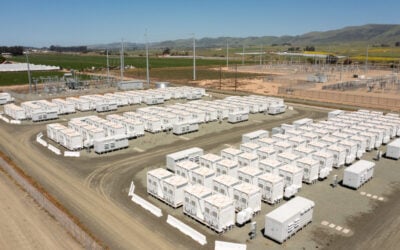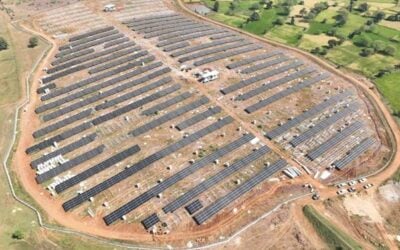
The American Clean Power Association (ACP) has launched a new guide aimed at helping first responders understand and deal with battery storage safety incidents.
Including recommendations for pre-incident planning and incident response, the guide addresses potential hazards such as fire, explosions, arc flash, shock and toxic chemicals. It is written with lithium-ion (Li-ion) battery energy storage system (BESS) technologies in mind, but the trade group said some elements of the guide may apply to other technologies.
Enjoy 12 months of exclusive analysis
- Regular insight and analysis of the industry’s biggest developments
- In-depth interviews with the industry’s leading figures
- Annual digital subscription to the PV Tech Power journal
- Discounts on Solar Media’s portfolio of events, in-person and virtual
The importance of engaging with first responders on topics of safety has been a major talking point in the industry for some time, particularly since the 2017 fire and explosion in Arizona which injured four firefighters.
While all of the affected fire crew were heard to have recovered and returned to active duty, confidence in the industry was shaken. In the aftermath of the incident, investigations and reports found that closer engagement with local first responders would have put fire crews and authorities in a much better position to deal with a then-unfamiliar set of risks.
Although today fires remain extremely rare at grid-scale BESS installations, the handful that do occur continue to raise concerns that the risks of this relatively still new technology require the continuing development of best practices and education for stakeholders, including working directly on training first responders.
New York’s governor Kathy Hochul has just convened a working group made up of different state-level agencies including the fire department to investigate and evaluate the safety of BESS projects, in the wake of three high-profile fires since May.
What’s in the guide
The ACP guide assumes a BESS installation to be subject to the most up to date safety standard, the 2023 revision of NFPA 855 from the US National Fire Protection Association.
It also assumes relevant projects to comprise outdoor battery enclosures with 600kWh or more capacity, which means they require hazard mitigation analysis (HMA), as well as fire and explosion testing in accordance with the UL9540A standard on thermal runaway propagation, and emergency planning with corresponding annual training.
NFPA 855 requires project stakeholders to submit the HMA, UL9540A testing results and emergency response plan (ERP) to authorities having jurisdiction (AHJs), to be made available to the developer of a pre-incident plan.
ACP noted that access to battery management system (BMS) data is also a vital part of making informed choices regarding emergency response. The BMS can make it possible to observe current conditions of the batteries, including their temperature. During incident response, an appropriate incident command individual should have access to that BMS data, the guide recommended.
The guide then has short sections on how each risk of fire, explosion, arc flash and electric shock, and toxic chemicals should be assessed and treated.
It also includes a discussion of those hazards, including the current debate about fires. That includes the different strategies being considered by manufacturers that include BESS designs that ‘make it burn’ to allow systems to burn out when the lower flammable limit (LFL) is reached but before a lower explosive limit (LEL) is reached.
ACP noted however that ‘make it burn’ is more effective for systems using Li-ion cells based on transition metal oxides, such as nickel-manganese-cobalt oxide (NMC), which release oxygen during thermal runaway events. For other chemistries like lithium iron phosphate (LFP), which releases no oxygen during thermal runaway, it is suggested that venting of gases by automatic opening of doors or panels could help prevent explosions.
Download and read the American Clean Power Association’s ‘First responders guide to lithium-ion battery energy storage safety incidents’ here.






